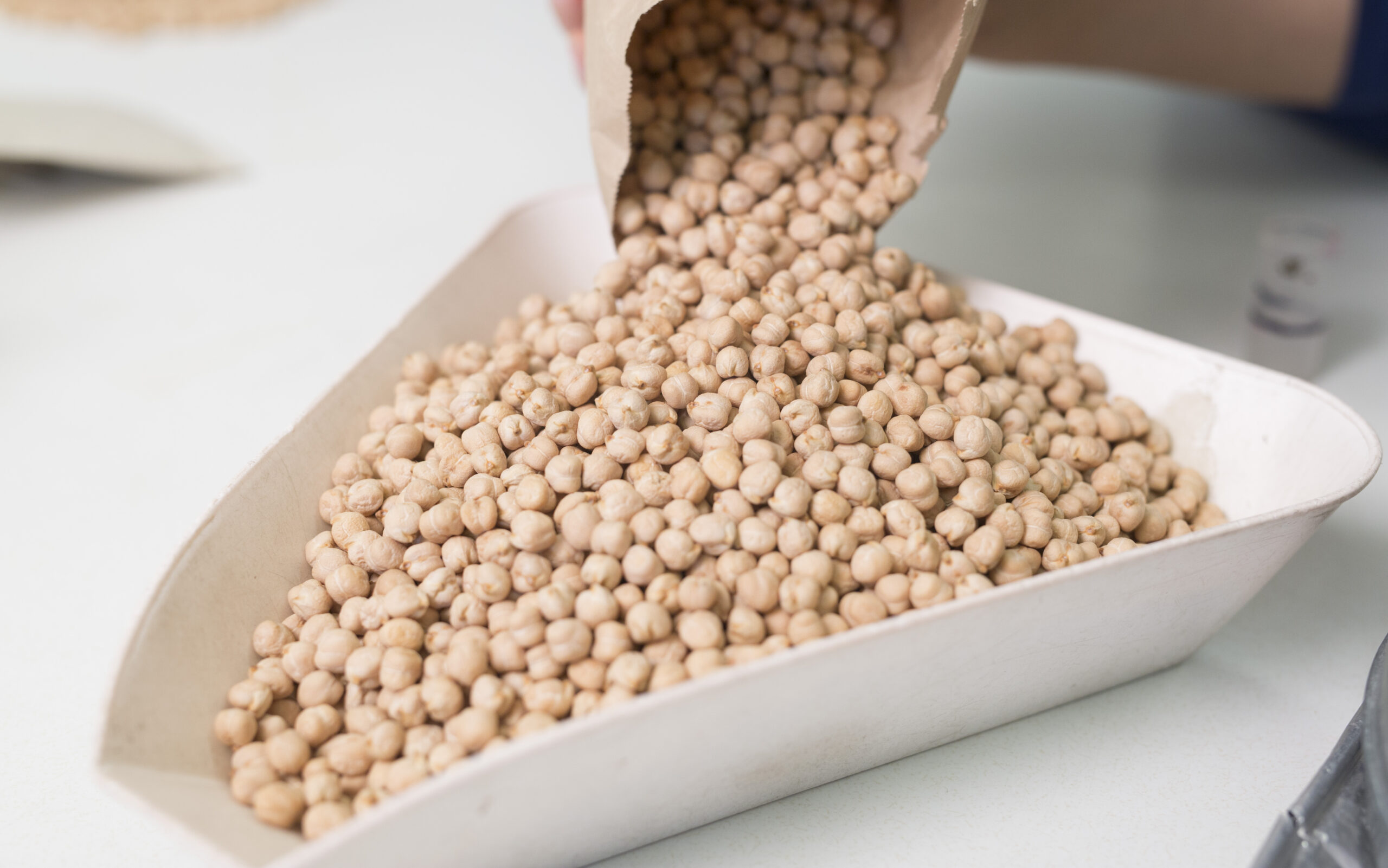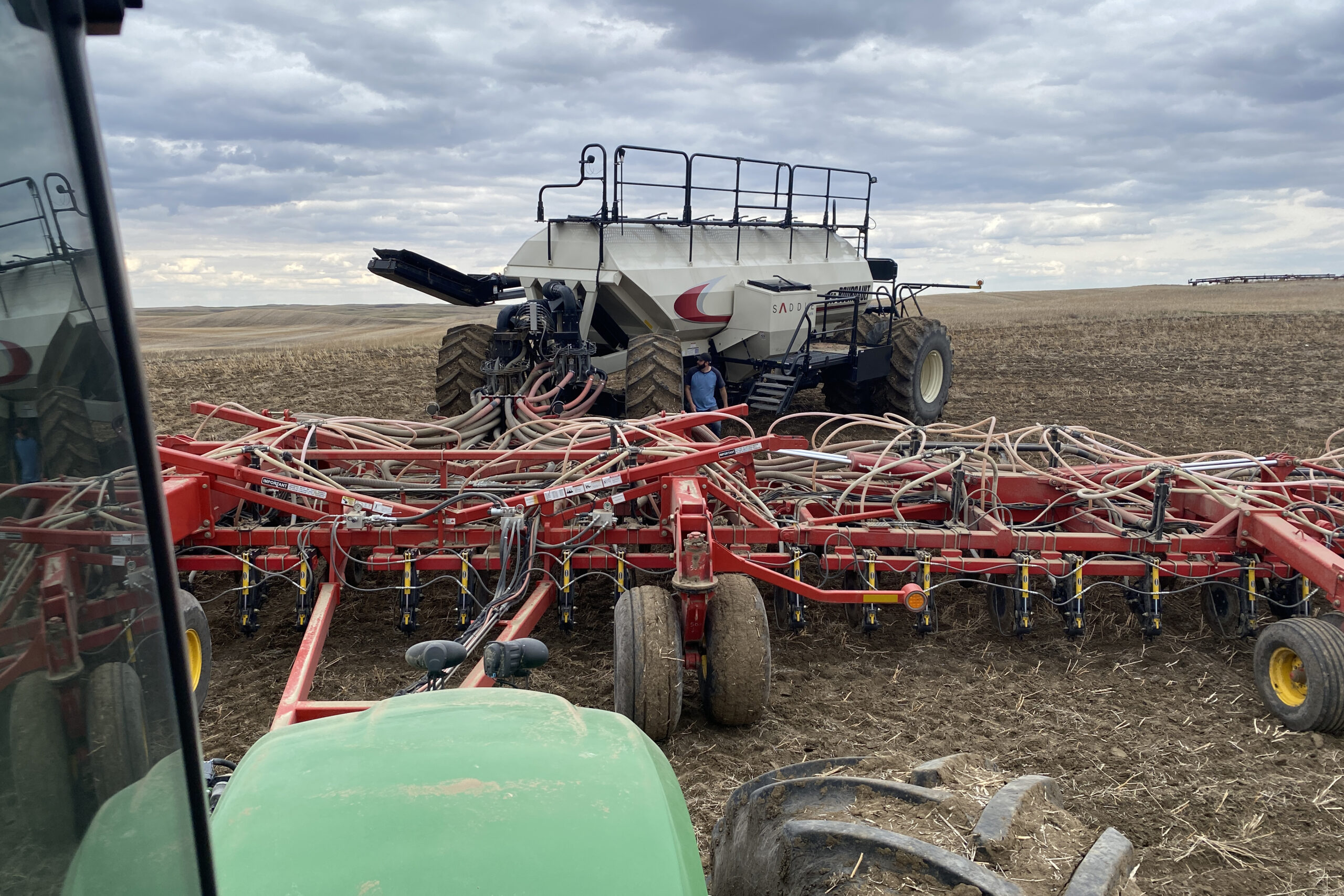Putting knowledge into the hands of growers, breeders, and processors to benefit the entire pulse industry
By Noelle Chorney
The National Pulse Research Strategy recently identified a need that was also reflected in Saskatchewan Pulse Growers’ (SPG) long-term research strategy: the need to establish a Pulse Quality Program (PQP). Phase 1 of that program is now underway and will increase industry knowledge on the quality of pulse varieties grown across Saskatchewan and how the environment and best management practices influence that quality.
Janelle Carlin, Director of Quality Processing at Pulse Canada, says, “With the evolution of the pulse industry, quality has become increasingly important. Pulses were traditionally exported as a bulk commodity, but in the last ten years we’ve seen significant growth in value-added processing and an accompanying demand for more consistent quality. We’re growing beyond the need to understand only historical attributes like seed size, breakage, and colour and getting deeper into quantitative and qualitative traits as they relate to end- uses.”
The PQP is as much about understanding what processors value in pulses as it is about understanding the quality of pulses when they are being planted or coming off the field. The Saskatchewan Food Industry Development Centre is a partner in the program. Sherrilyn Phelps, Director of Research & Development with SPG, says, “The Food Centre offers expertise on pulse quality and parameters needed for the processing of pulses into ingredients as well as the use in food and feed applications. Their expertise on product development, processing, protocol development, and quality assurance makes them an ideal partner in establishing a PQP.”
Prior to the PQP, limited quality tests could be obtained on a fee-for- service basis. The testing protocol under development in the PQP will focus on specific questions related to quality parameters that are important for end users, and on how genetics and environment (GxE) influence those parameters across changing growing seasons.
Carlin says, “This year-to-year data is important for the Canadian pulse industry. We often get asked, ‘which variety is best for my process?’ And we don’t always have an answer. This critical information will expand markets and give answers to processors.”
The Food Centre has hired a program manager who has developed a manual of testing protocols for a dozen quality characteristics. Mehmet Tulbek, President of the Saskatchewan Food Industry Development Centre, says, “The Food Crop Quality program is a new program in the Food Centre with the mission to add in best management practices for Canadian food-grade crops and to help the development of plant-based ingredients and products in the food industry. This is a perfect year to start this survey of pulse crops. This year’s crops will have larger seeds, higher yields, and different protein and starch interaction compared to 2021, which was a much drier year.
“We now have a broad comparison on the effects of environment on variety expressions,” says Tulbek.
“To understand the influence of genetics and environment on quality a vast number of samples need to be analyzed in replicate to allow proper statistical analysis,” says Phelps.
Carlin says, “By gathering this data every year, we will gain valuable insights. The wheat industry has been doing this kind of work for decades. It’s exciting to see SPG commit to making this program more long term. We will learn so much more about seed quality, millability, and other important characteristics.”
SPG began the project with a Pulse Market Survey in 2021 to hear from a wide variety of processors about what seed qualities they valued. Using the results from the survey, they developed parameters for Phase 1 of the PQP, identifying a mix of historic attributes and nutritional composition to focus on. Whole seed parameters such as seed size, colour, moisture content, seed weight, protein content, starch content, fat content, ash content, hardness (texture analysis for millability), and micronutrient content (especially heavy metals) were identified. Fractionation or milling characteristics were also high priority and include dehulling efficiency, viscosity, cooking firmness and time, and water holding capacity.
With such a vast array of testing parameters, the program has been set up in phases. Phase 1 of the program is three years in duration and began in 2022. Phase 1 focuses on whole seed characteristics such as moisture, protein content, ash content, colour, size, weight, hardness and particle size and density of pulse flours. Phases 2 and 3 are under development with hopes to be implemented in the coming years.
Phase 2 and 3 will focus further on compositional analysis such as amino acid, micronutrient, ash, and starch content as well as tests for evaluation and functionality. Attributes for foaming, emulsification and water absorption would be included. “There are not as many tests for pulses as there are for other ingredients. We want to make sure the tests are relevant to what the industry needs to know. The list of end users is increasing because more pulse ingredients are being used than ever before,” says Dr. Bob Tyler, Emeritus Professor of the University of Saskatchewan Department of Food & Bioproduct Sciences and member of SPG’s Research & Development Committee.
With a growing bank of knowledge on pulse quality characteristics, decision making can become more strategic from the genetics lab, to the field, to the processing plant, to consumers’ kitchens. “This helps position Canadian pulses as a leader in pulse quality. By gathering information on individual varieties, we have the potential to establish a trusting relationship with industry representatives in North America and beyond,” says Carlin.
Dr. Tyler says, “We can’t know too much about the composition and properties of what we grow. The more we know, the more we can match what the market is asking for to what we’re growing. Producers are going to want to grow whatever gives them a premium – and the Pulse Quality Program will help us angle our breeding programs, variety selection, crop rotations and management practices in that direction.”

Published November 2022



